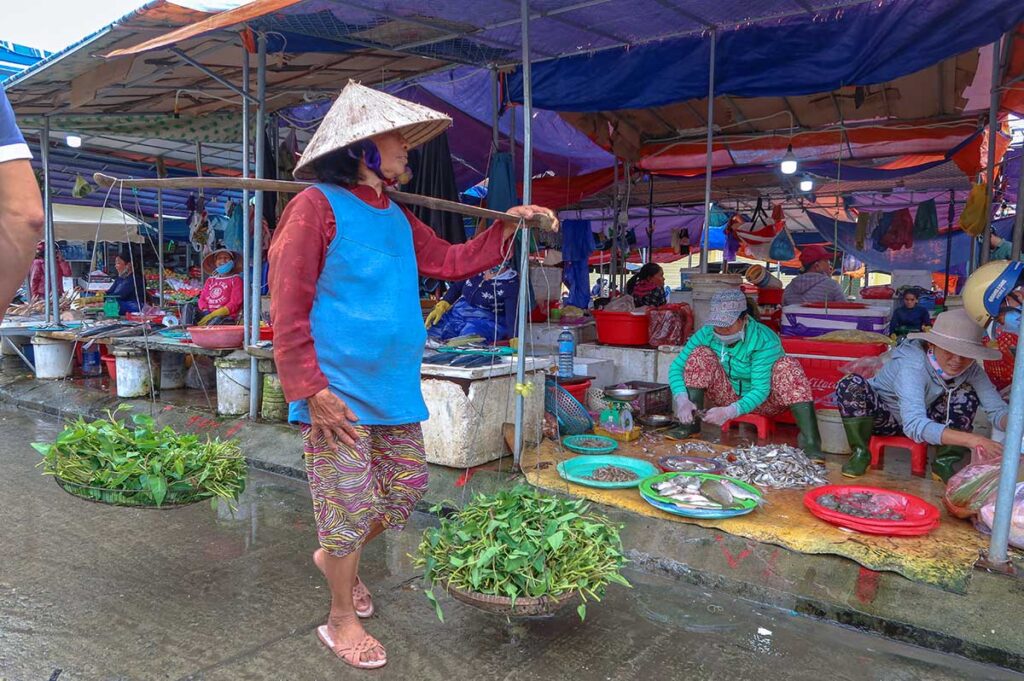What is Ba Le Market?
Location & Local Role
Ba Le Market is located on Lê Thánh Tông Street in Cam Châu ward, about two kilometers from Hoi An’s Ancient Town. It is very much a neighborhood market, serving the daily needs of local residents and nearby expats. Unlike Hoi An’s Central Market, which has a clear tourist presence, Ba Le remains focused on the community it was built for.
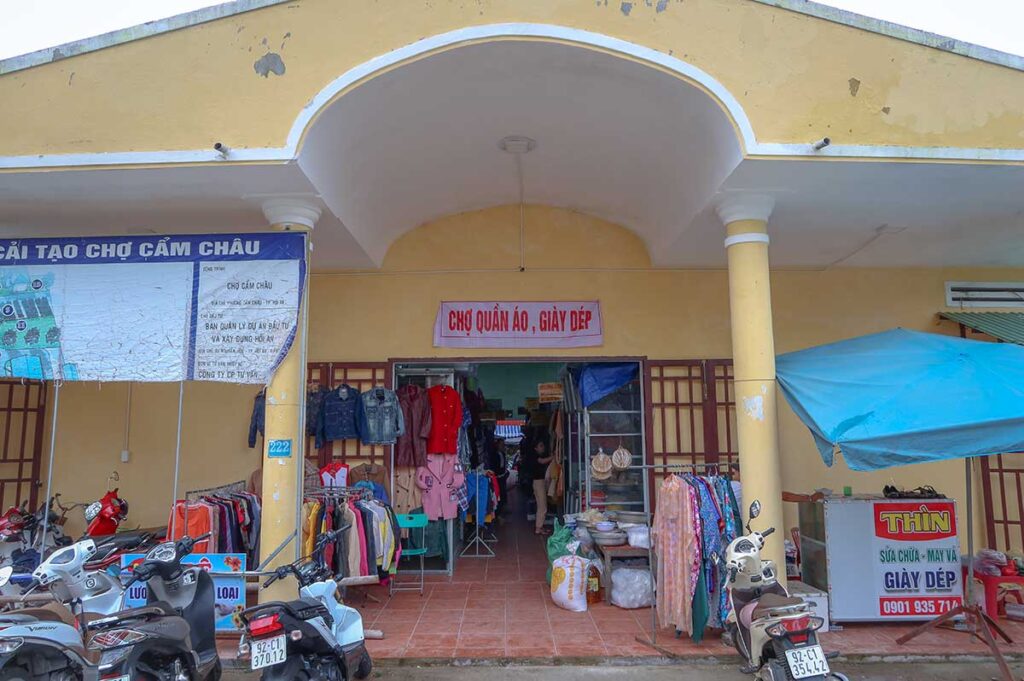
History & Development
Often also referred to as Cam Châu Market, Ba Le has long been a fixture of this part of town. Over the years it has expanded from a small gathering of stalls into a permanent market space, growing in step with the residential community around it. Like many Vietnamese markets, it has shown resilience through periods of flooding and economic change, bouncing back each time to continue serving its role as a neighborhood hub.
Role in Daily Life
For locals, Ba Le Market is the place to buy everything from fresh vegetables, herbs, seafood, and meats to clothing, home supplies, and small repair services. It is not only about commerce but also about connection: neighbors meet here, conversations flow across the stalls, and daily routines are anchored around its rhythms.
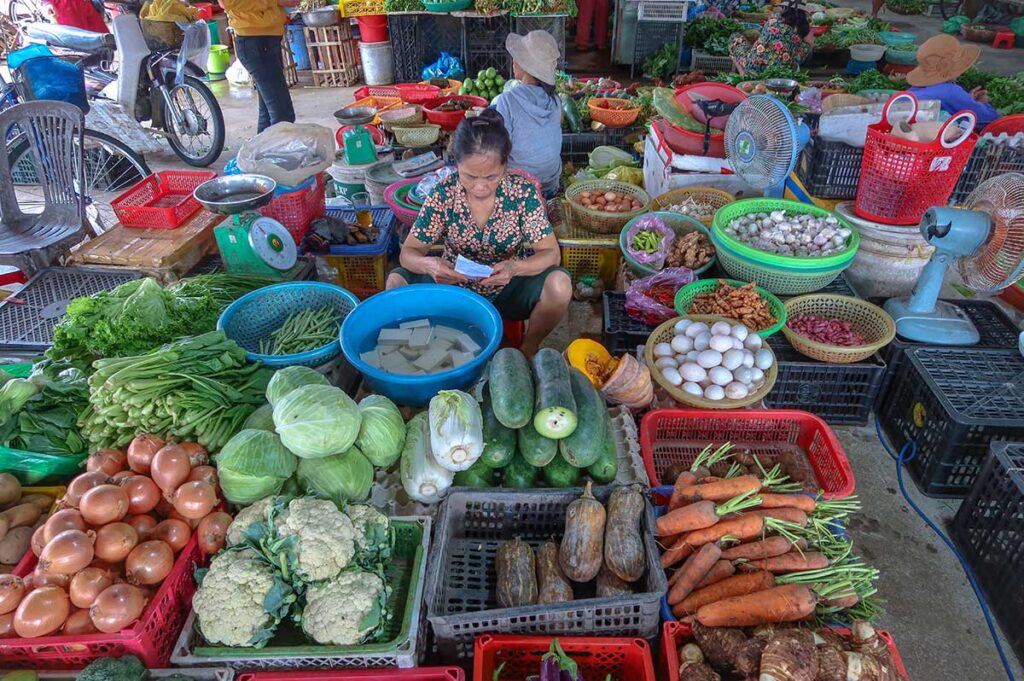
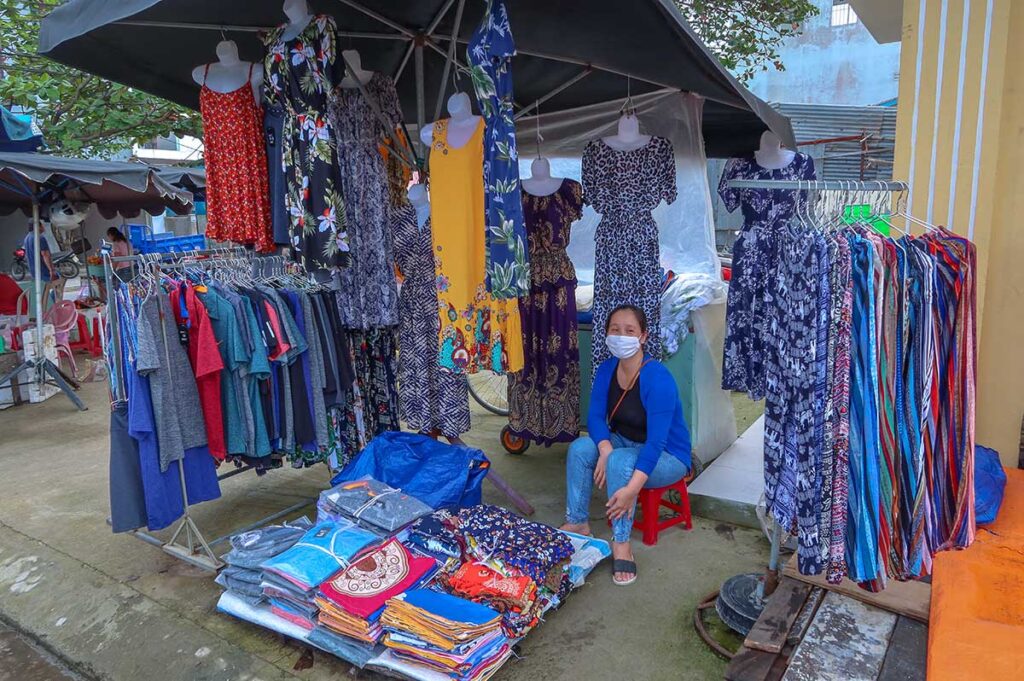
Compared with the Central Market in the Old Town, which is shaped heavily by tourism, Ba Le reflects the everyday life of Hoi An more directly.
Things to see at Ba Le Market
1 .Fresh produce & Wet market stalls
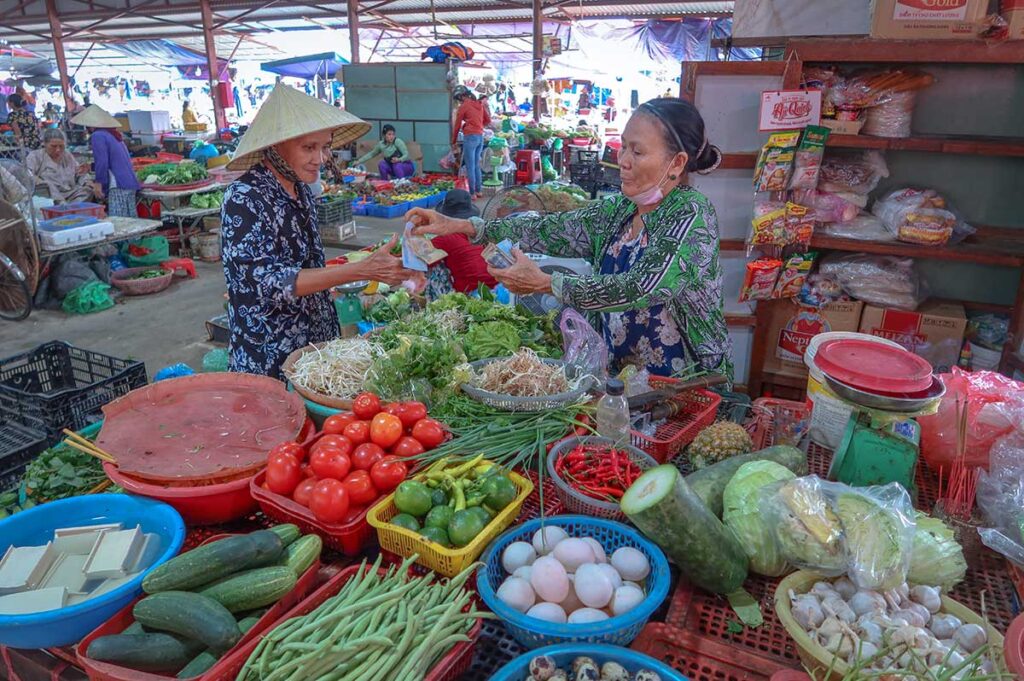
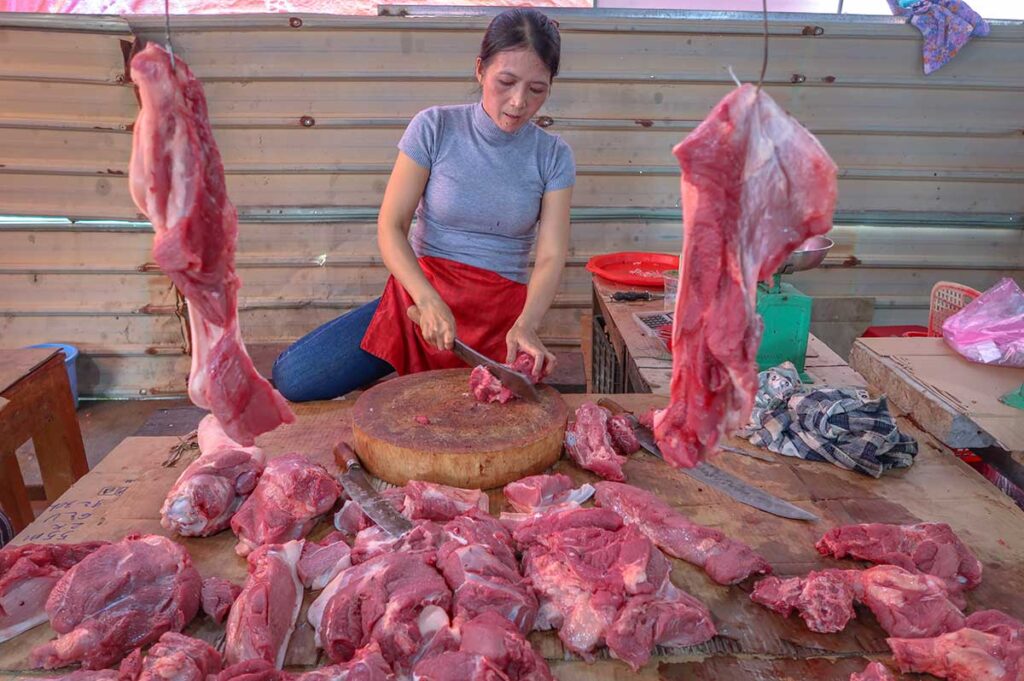
The heart of Ba Le Market is its wet market section, where vendors display baskets of leafy herbs, stacks of tropical fruit, trays of fresh fish, and neatly cut meat.

Seasonal specialties like mangosteen, rambutan, and loquat appear alongside staples such as morning glory, papaya, and chili. It is busy in the early hours, when locals come to pick up the day’s ingredients.
2. Street food & Local snacks
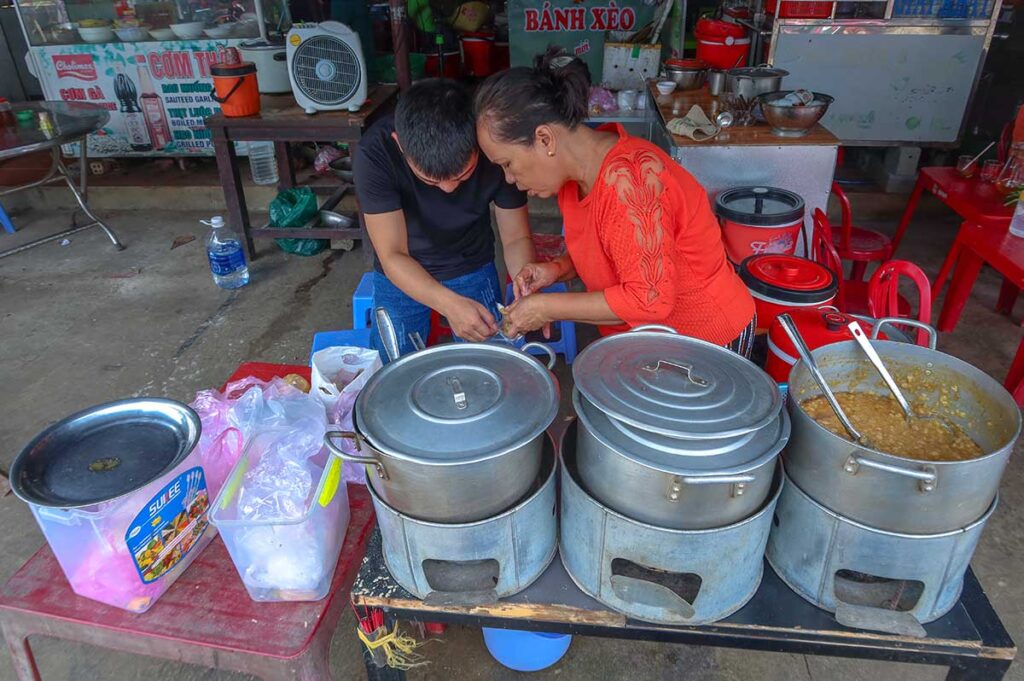
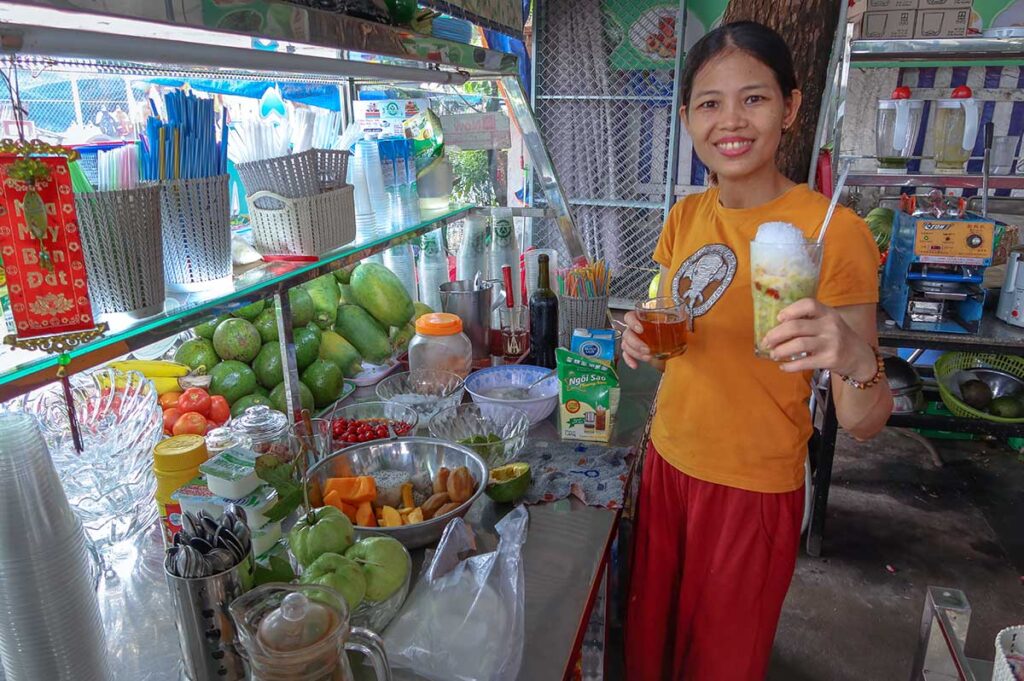
Food stalls are tucked between the market alleys and outside along Lê Thánh Tông Street. In the morning, you can grab a bánh mì, a steaming bowl of cao lầu, or a sweet glass of chè. Later in the day, simple snacks and hot meals are still served, and in the evenings small food stalls line the street in front of the market, popular with neighborhood residents.
3. Flowers & Religious offerings
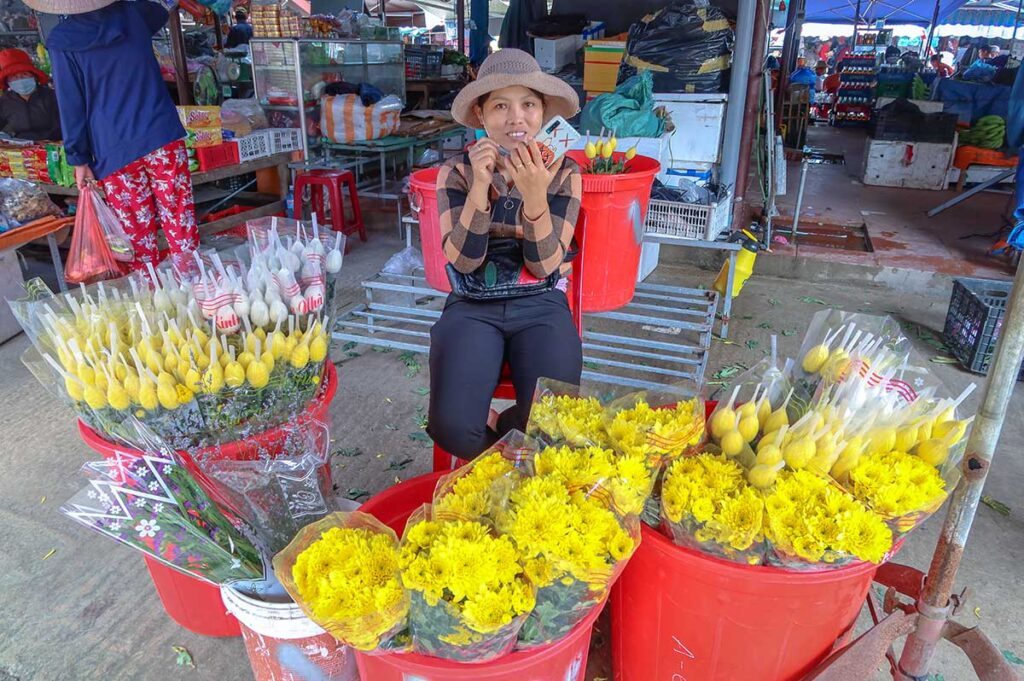
Among the food and household items, you’ll also find flower vendors selling yellow chrysanthemums, lotus buds, and other blooms. These are often bought for family altars or temple offerings, showing how everyday shopping here connects with local spiritual life.
4. Tailors & Clothing stalls
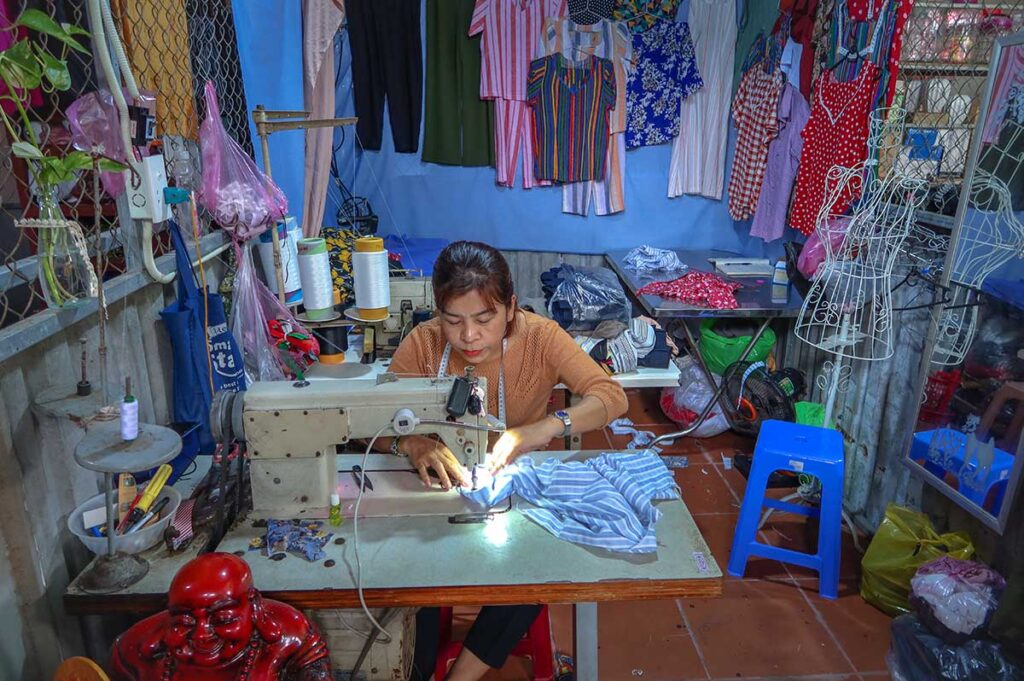
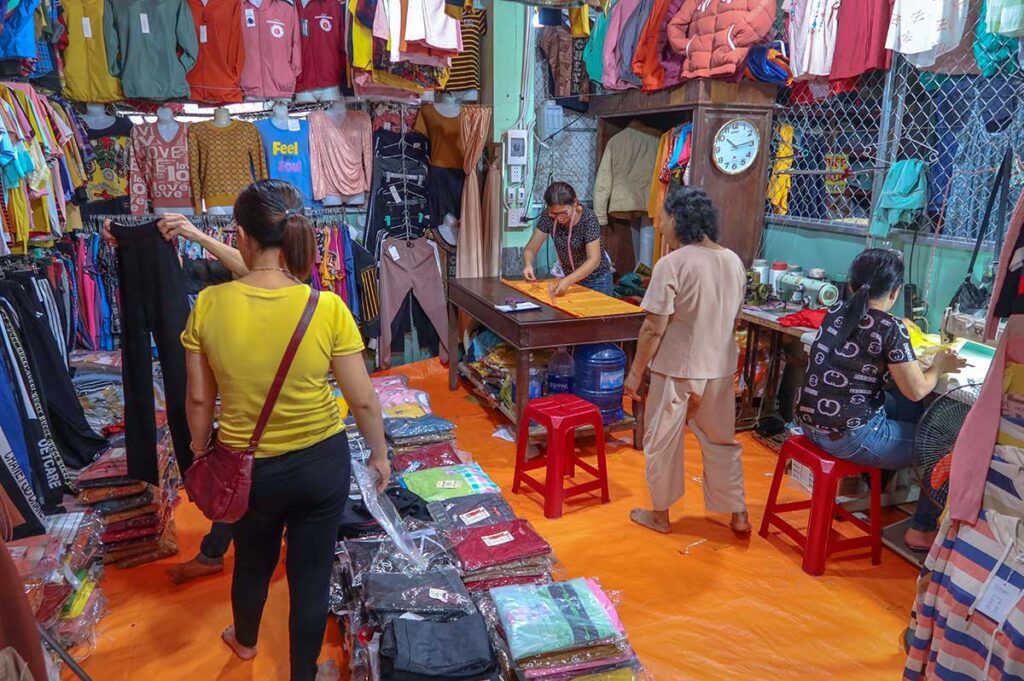
Unusual for a neighborhood market, Ba Le includes tailoring services inside the building. Visitors will see seamstresses working on machines, offering quick adjustments or repairs. Alongside them are stalls with fabrics, T-shirts, dresses, and daily clothing, making this a market that extends beyond food.
5. Household goods & Special finds
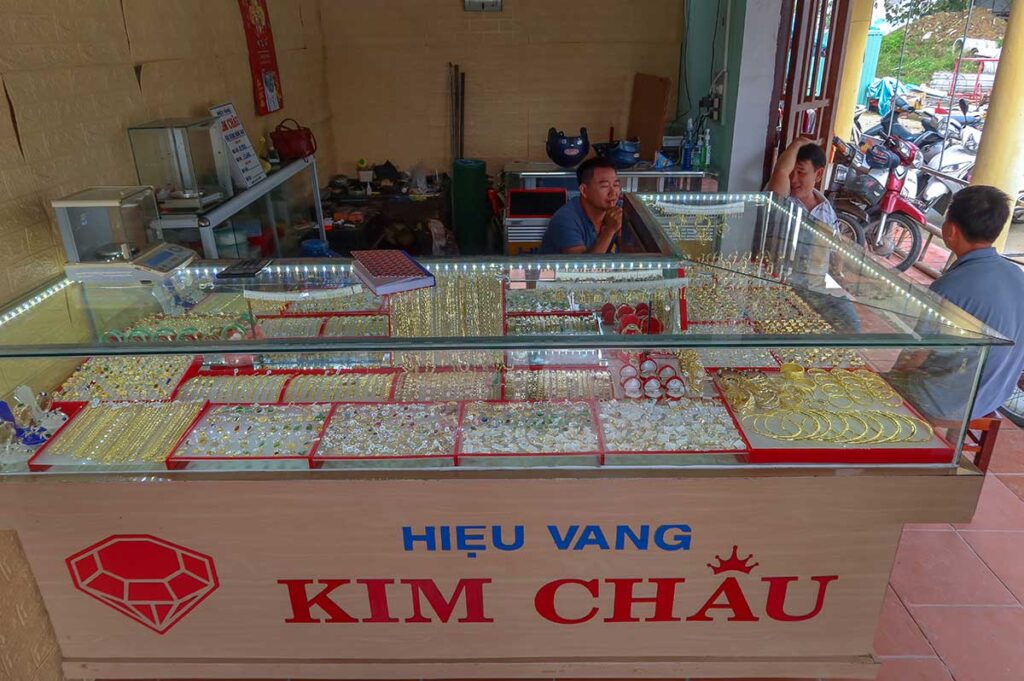
Ba Le is also a practical shopping spot for non-food items. You can find everyday kitchen utensils, simple chopsticks used in Vietnamese homes, and even small stalls with jewelry or trinkets. There are services like shoe repair and sewing as well, making the market a convenient one-stop shop for the neighborhood.
6. Community & Culture
What makes Ba Le Market most interesting is the atmosphere. Vendors call out prices, neighbors pause for a chat, and bargaining mixes with the sound of scooters and laughter. For visitors, it’s a chance to step into the rhythm of local life and, with a camera in hand, capture candid moments that show Hoi An beyond the tourist sites.
Practical visiting information & Tips
Location & How to get there
Ba Le Market is located about 2 kilometers from Hoi An’s Ancient Town, on Lê Thánh Tông Street in Cam Châu ward. It’s easy to reach by bicycle or motorbike, and many visitors also come by taxi or simply walk from central Hoi An.
Opening hours & Best time to visit
The market opens around 5–6 AM and is at its liveliest in the early morning, when seafood and vegetables are freshest and most vendors are active. By midday, many meat and fish stalls close or slow down, though fruit vendors often remain open until 8–9 PM.
What to expect & Be aware of
As a wet market, floors can be damp or slippery, and the meat and fish sections may feel overwhelming to those unfamiliar with Vietnamese markets. Prices are generally fair, but foreigners may notice being charged slightly more than locals. Regular visits or building a rapport with a vendor often leads to better deals and small extras.
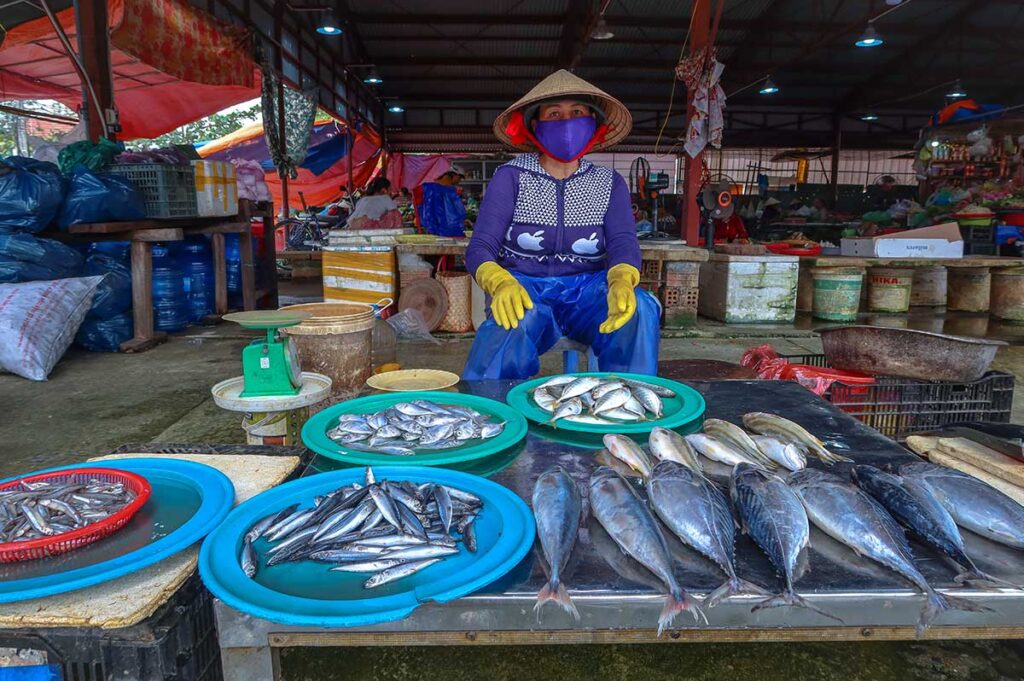
Photography tips
Ba Le Market is excellent for candid photography, with plenty of color, movement, and local character. Be discreet and respectful when taking photos, and consider asking permission if you want a close portrait of a vendor.
Money & Shopping
Cash is essential, and it’s best to bring small notes to make transactions easier. Bargaining is possible but usually low-key compared to tourist markets, as prices here are already geared toward local customers.
What to wear
Wear comfortable shoes with good grip, as market floors can be wet and uneven. Light clothing is recommended in the humid mornings, and if visiting after rain, be prepared for puddles around the entrance.
Is Ba Le Market worth visiting?
Ba Le Market is worth visiting if you want to experience authentic local culture in Hoi An. It’s a place where residents shop for their daily needs, where you can find fresh ingredients, casual food stalls, and the sounds of real neighborhood life. For travelers staying longer in town, photographers looking for candid scenes, or those joining a cooking class, it offers an insightful look into the rhythms of daily life.
That said, it’s not for everyone. The market can feel chaotic and less clean than tourist-oriented spaces, and many of the items on sale are everyday essentials rather than souvenirs. Similar markets can be found across Vietnam, so if your time is limited, you won’t miss a major attraction by skipping it.
To put it into perspective:
- Hoi An Central Market – larger and more convenient, but crowded with tourists.
- Tan An Market – even smaller and more local than Ba Le.
- Hoi An Night Market – focused on lanterns, souvenirs, and evening atmosphere.
Ba Le Market sits in between: a true community hub that shows you a different side of Hoi An, away from the Ancient Town’s polished streets.
Other markets in Hoi An
Ba Le Market is just one of several markets around Hoi An, each with its own character and focus. If you’re curious to explore more, here are some alternatives:
- Hoi An Central Market – The biggest and busiest market, right in the Ancient Town. It mixes local trade with a heavy tourist presence, offering everything from fresh produce to souvenirs.
- Hoi An Night Market – Famous for its colorful lantern displays, street food, and souvenir stalls. More of a nighttime attraction than a daily market.
- Thanh Ha Fish Market – A lively early-morning seafood market near the fishing village of Thanh Ha, offering a raw glimpse of local life by the river.
- Tan An Market – Another neighborhood market on the edge of town, even less touristy than Ba Le, and focused almost entirely on local daily shopping.
For a full overview, see our complete guide to the Best markets in Hoi An.
